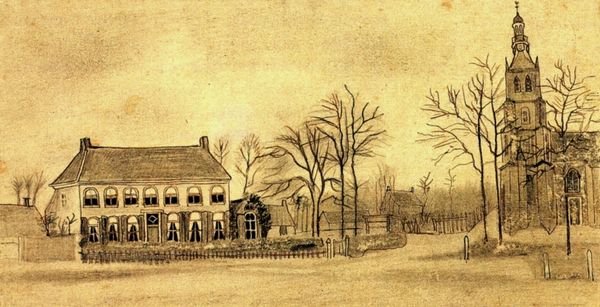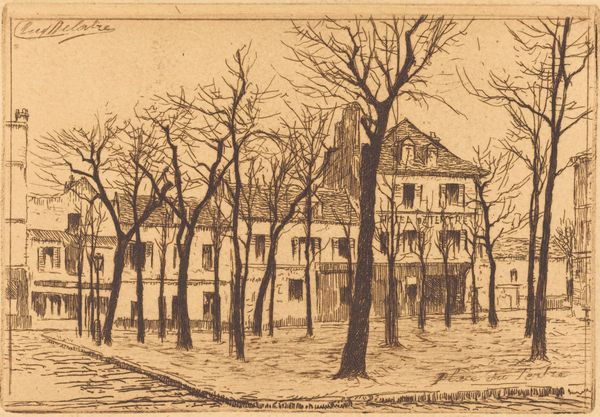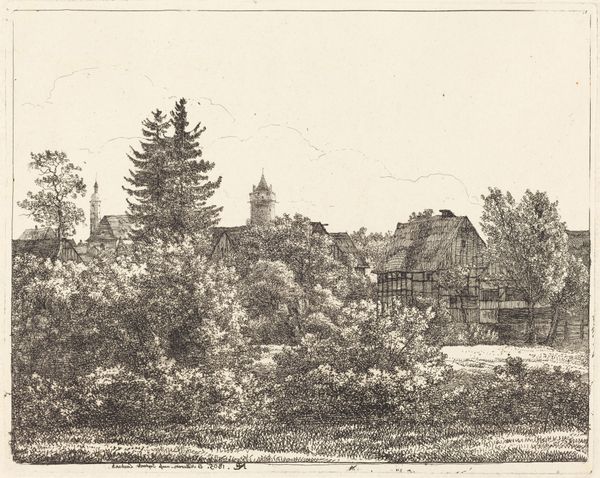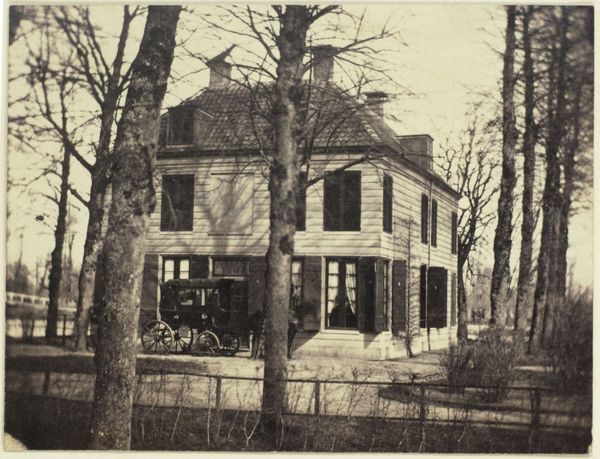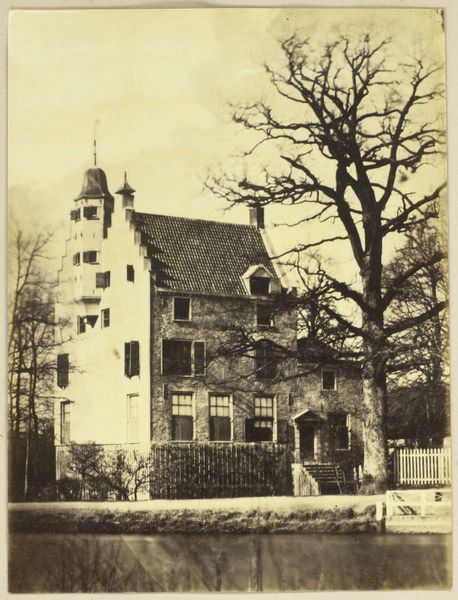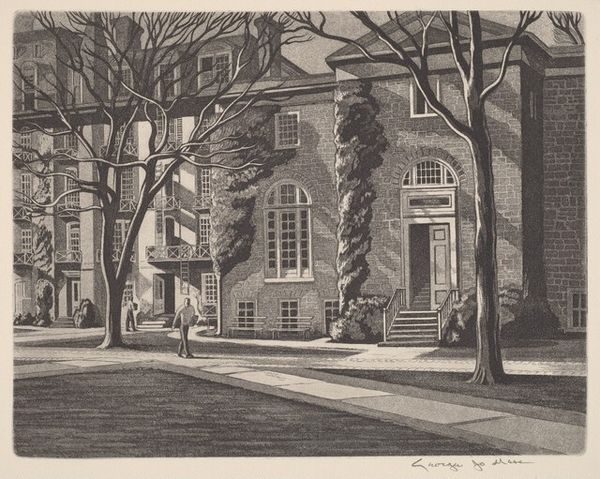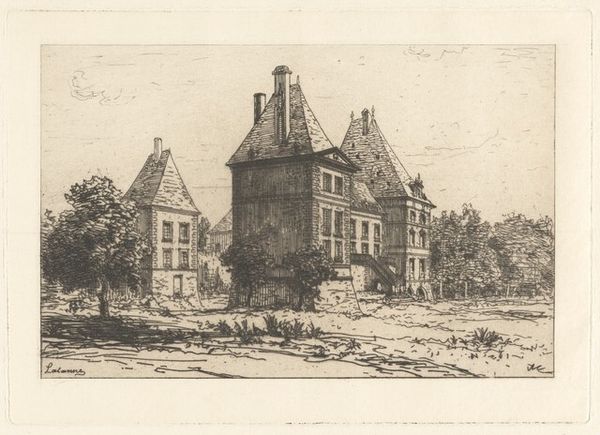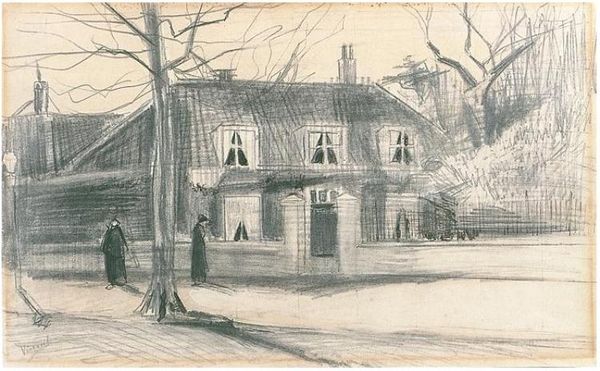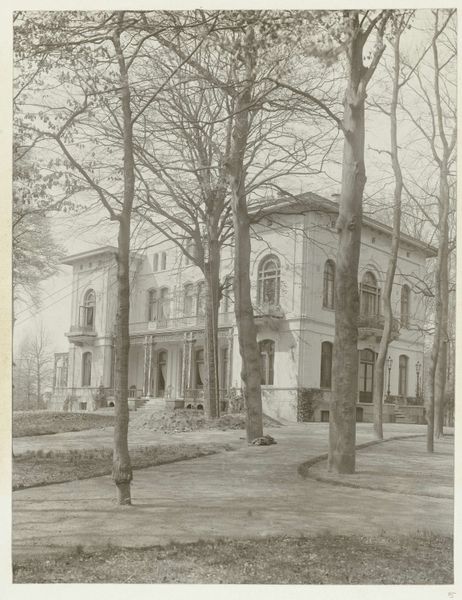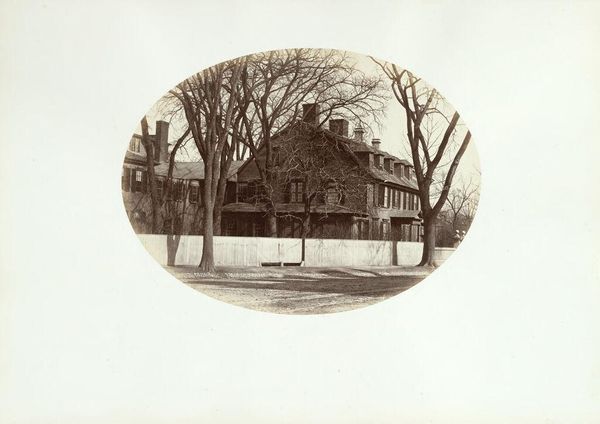
Copyright: Public domain
This somber pencil drawing of the Vicarage at Etten was rendered by Vincent van Gogh during a profound period of self-reflection and familial tension. Dominating the composition is the imposing structure of the vicarage, with its symmetrical façade and rows of windows. This architectural representation evokes ideas of order, tradition, and perhaps confinement. Observe the windows themselves: these portals to the world outside are heavily shuttered, their darkness hinting at the secrets and unspoken tensions within. The motif of the closed or obscured window has appeared throughout art history, from Renaissance Annunciations to 19th-century Symbolism, representing themes of isolation, introspection, and the hidden self. Consider the psychological weight of this symbol: does it reveal a desire for privacy? Or does it reflect the stifling atmosphere of a home filled with unresolved emotions? Ultimately, the power of such imagery lies in its ability to resonate with our own experiences of memory, family, and the complex interplay between the inner and outer worlds.
Comments
No comments
Be the first to comment and join the conversation on the ultimate creative platform.
